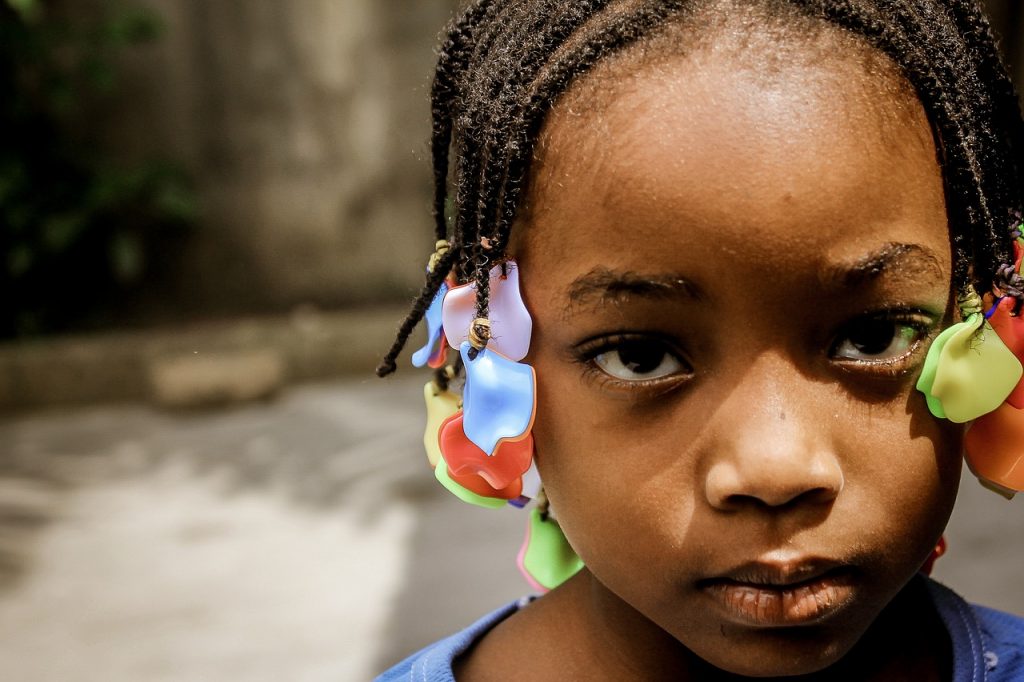In July 2017 the Children’s Society published a report called ‘Making Connections – Understanding how local agencies can better keep missing children safe’. Whilst the report does not solely focus on Independent Return Home Interviews (IRHI), much of the content is devoted to this critical area of safeguarding. Within their report the Society concludes, that whilst the offer of an IRHI is a statutory duty for local authorities, many children and young people are missing out on this provision. Another justified criticism they have of the current IRHI system, is that vital intelligence garnered from interviews, is not shared consistently between agencies.
In my role, the subject of IRHI’s and the issues around them, are an almost daily debate amongst colleagues, not only in my agency but across local authorities and local safeguarding boards. I have been involved in many projects, pilots, meetings and conferences where agencies have come together to improve not only the quantity of interviews they offer and complete, but also how to provide the interviewer with the best tools to obtain that crucial information and intelligence. I have also seen many attempts by very dedicated people to ensure that agencies share that intelligence, so that it enhances and informs the risk assessment the next time a child goes missing. I therefore feel I am in a good position to agree with the charity on both counts, that is that the delivery of IRHI’s is inconsistent across England & Wales, and where they do take place, they are ineffective if the information obtained from them is not shared properly.
I agree wholeheartedly with all the criticism within their report and support all their recommendations. I also share the Society’s ethos that every child and young person should be offered an IRHI. However, I will say boldly that the IRHI system is broken. In this article I will argue why I believe that is the case, why I feel it is impractical to offer a RHI to every child and why therefore, the RHI guidance is a statutory duty, set up to fail.
What is an Independent Return Home Interview?
The statutory guidance for Local Authorities states that on every occasion a child goes missing, on their return they should be should be offered an independent return home interview (IRHI). This is different from the police prevention interview (formerly known as a safe and well check) and provides the child an opportunity to engage in a more in-depth interview. The local authority only have to offer the interview to fulfil their statutory obligation. The key benefits of the IRHI are:
- identify if the child is at risk
- identify if the child suffered any harm, including harm that might not have already been disclosed as part of the police prevention interview
- understand the issues and reasons why the child went missing
- understand the risks and issues the child faced whilst missing
- try to prevent or reduce the risks of future episodes of missing or running away
- provide the child with a better understanding of the risks associated with missing
- supply them with information and resources on how to stay safe if they do choose to run away again.
A return interview should be an in-depth discussion with the child, the aim being to identify any support and interventions the child needs moving forward. Where the child is relatively unknown to social care, then this may be the opportunity for early intervention support for the child or their family. For a child already in care, the information obtained in an IRHI should contribute to their care and placement plans.
The Issues
Statutory Duty and the ‘offer’
The Department for Education (DfE) ‘Statutory guidance on children who run away or go missing from home or care’ makes it a requirement that when a missing child is found, they must be offered an independent return interview. I regularly see feedback and reports where local authorities claim that they are delivering 100% compliance on offering a young person the opportunity to talk to someone. How do these local authorities measure compliance and what exactly does an offer mean? By whom is an offer delivered and in what form – verbally or by letter? The answer is that it differs greatly between local authorities, as do their counting rules. How are these offers ‘sold’ to young people? Whether communicated verbally or in writing, a sentence like “I must make you aware that you are entitled to speak to someone independent about why you went missing”, sounds a bit like a police interview caution and will have little effect on a young person who is likely already struggling with significant issues.
How many attempts to contact the young person constitutes an offer? A key worker from a non-government agency who makes several attempts to engage with, gain trust and persuade a young person to talk, is in my view what constitutes an offer. Having any other system of offering return home interviews simply becomes a tick box exercise to satisfy Ofsted and Freedom of Information requests. I am very sceptical when I hear the magical ‘100%’, given that anyone who is connected to missing children, knows how much a struggle it can be to make a difference to these children’s lives. Rather than measuring local authorities on the number of interviews offered, shouldn’t they be judged on the number conducted and the positive interventions that come from those interviews?
Timeliness
The DfE guidance states that IRHI’s should take place within 72 hours of a child or young person being found or returning from the missing episode. However, in many local authorities there are problems meeting this 72-hour deadline. The reason is that under police guidelines, forces are required in the majority of missing children cases to carry out a ‘Prevention Interview. This involves a police officer being sent to see the located child to establish certain facts. The difficulty with this is that a child that has returned is no longer seen as a “there and now risk”, and whether you like it or not, there will be many police calls that will now take precedence over a prevention interview. This means that going to see a child who has returned is often delayed for many hours. For repeat missing children this may even mean that by the time that the police have capacity to catch up with the prevention interview, that child has now been reported missing again. For a child that habitually comes back to a care placement or home, then disappears again very quickly, the police can often have 2 or 3 outstanding prevention interviews to complete for that single child.
Generally, police notifications to the local authority of a returning child are speedy, relying on automated systems. This allows the authority to spring into action. However, forces differ in their IT and some do not notify the local authority that a child has returned, until they have completed that prevention interview. If a child isn’t being seen for many hours, sometimes days by the police, then in these cases, the opportunity for the local authority to meet the 72-hour timescale is reduced. There are often also problems with tracking the child down and many carers are reluctant to allow police officers access to children at unsociable hours, which all contribute to extending the timescales.
All these issues occur even before the local authority begin to ready themselves to make the offer of an IRHI. They then face the same problems as the police, namely contact with and access to the child. In many cities and areas where there are high numbers of repeat missing children, volume is also a significant factor. The timeliness of police and local authority led interviews are undoubtedly important. Identifying any harm that the child may have suffered, early recognition of crime and preservation of forensic evidence are all good reasons why an interview should take place quickly. However, my view is that the current situation, which is neither the fault of the police or the local authority, simply does not allow for a realistic timescale for all children. I would question why all children need to be seen within 3 days. We base our response to children on risk assessment, so why must every child be offered an IRHI and why must they take place within 72 hours. Why do we not adopt a risk-based approach to triage children who clearly need an IRHI, and those that are less likely to need one? Undoubtedly this comment will be challenged by many, particularly in the voluntary sector, who rightly argue that every child should have the opportunity. I do not disagree with this at all, in an ideal system every child would get the same level of response service. However, unfortunately finances, IT systems, resources and a lack of interviewers mean that it impossible in some areas to comply with the DfE timescales guidance.
Independency
The statutory guidance suggests that the person carrying out the interview is an independent person, that is, someone who is not involved in caring for the child. The reason that the interviewer should be independent is because a child may often find it difficult to talk openly about issues they may have with their care placement or social worker. Ideally, the interviewer should be trained to carry out these types of interviews and where a child is susceptible to a particular type of risk, such as gangs or sexual exploitation, it would be beneficial for the interviewer to have specialist knowledge in these areas, so that they are able to identify any risk indicators specific to these areas.
The problem I have with this part of the guidance is that there is no clarity around the meaning of the word ‘independent’. This is mentioned in the Children Society’s report where they highlight that the lack of the guidance in this area means that interpretation differs from authority to authority. Through their FOI requests they found the most frequently cited provider of IRHI’s were staff from children’s services. In other words, there is a good chance that for looked after children, many IRHI’s are being conducted by the child’s social worker, potentially as part of a routine visit to a care placement. Of course, there are many local authorities who have a dedicated team of independent social workers, use voluntary agencies or use the child’s Independent Review Officer (IRO) to complete the IRHI. However, if we were being honest with ourselves, a good percentage of these interviews are conducted by those who are not independent and whom are involved directly in the care of the child.
Information sharing
Under two-thirds (62) of local authorities that responded to the Children’s Society’s FOI requests do not share risk assessments with local police for all looked-after children that they host. For me this is the stick out headline in the Society’s report.
For someone whose core role was to locate vulnerable missing children, not being made aware of the full facts, latest information, risk and vulnerabilities of that child, is like asking me to do my job whilst tying one hand behind my back. Some missing person teams can have 20 plus children they are trying to locate at any one time, so it is vitally important that those tasked to find and return them safely, are empowered to make decisions around risk and allocate the appropriate resources to the most vulnerable.
The Society also identified that almost half of the local authorities that responded to their FOIs did not have an information sharing protocol agreement in place between themselves, the police and RHI providers for sharing information about missing children. They identified that “there are huge variations in what and how information is shared between the police and children’s services”. I have been on the wrong end of this huge problem. I am not permitted to give case specific examples, but if I was, I could give example after example, where well into a missing child enquiry, already known information has emerged that changes the course of the investigation and also elevates the status to high risk. Intelligence from IRHI’s can inform risk assessments and aid the quick recovery of the child.
An ill-informed risk assessment is a huge vulnerability for not only the child, but for all the agencies involved in the safeguarding of that person. The Society describe the reasons for sharing information perfectly in their report: – “it informs police missing persons investigations, CSE and criminal investigations, risk mapping, local authority risk assessment and further support by children’s social care services, and multi-agency safeguarding assessments”.
So, what are the biggest barriers to sharing information gained from IRHI’s?
Structure and IT Systems – there is no one system for sharing information gained from an IRHI. If and how this is done is dependent on any local arrangement, if one exists. If a structure is implemented, then this can easily break down when key personnel from either the local authority or police move on. IT systems are poor, and in most areas, there is no one system for sharing information, relying instead on secure email. The lack of automated systems or an agreed structure inevitably leads to information not being passed in a timely fashion.
Intelligence and information – you will struggle to find much wrong with the current government guidelines on information sharing. They make it abundantly clear what the responsibilities of all safeguarding professionals are when sharing information to protect children. Yet there is still a huge problem in this area and IRHI’s are a prime example where valuable information isn’t always grabbed from the pages of an IRHI form and passed to those that need it. There is a disparity between what police see as intelligence and what social care see as information. I was at a mini conference on IRHI’s and the 50 or so professionals were asked to look at this particular problem – ‘how do we extricate the salient points from what can be a very lengthy interview and provide the police with the information they need to allow them to assess risk and fulfil their safeguarding duties’. The facilitator of this debate raised the valid point that when adopting an approach to sharing safeguarding information, “police officers need to become more like social workers, and social workers need to become more like police”. This quote and approach came out of the Rotherham CSE enquiry , but is relevant to IRHI’s.
In their report the Children’s Society make some sensible recommendations both at a local, national and governmental level. These include developing guidance on “a standardised pathway to record key information from RHIs” and ensuring that local authorities and the police work in partnership with statutory partners to develop a package around what constitutes good intelligence. For me this is all about training and ensuring that everyone that conducts RHI’s have the skill set to identify the differences between information that concentrates on the care of the young person, and that which is tangible intelligence the police can use to safeguard the young person, target and disrupt perpetrators.
Take this example: A 16-year old girl who reveals that she was picked up by three older males in a red car, driven around Birmingham whilst being offered cannabis and cocaine in exchange for performing a sexual act on the males. This is valuable safeguarding information for both social care and police. It allows both agencies to shape the future safeguarding response to that young person and allows social care to take action, such as arranging for the young person to access health provisions. However, for police, it is also important to identify intelligence that may potentially lead to the identity and arrest of a grooming gang. The make, model and distinctive features of the vehicle are what the police need, as well as much detail about the three males e.g. names, nicknames, descriptions etc. Of course, I am not suggesting that getting this information should take the form of a full evidential ‘achieving best evidence’ type interview. This is after all a RHI, but an interviewer knowing what might be useful intelligence may be able to capture the piece of the jigsaw that the police need to identify some pretty bad people.
I also feel that it is crucial that we have the right method of capturing this information. This should be a standardised ‘best practice’ e-form used by all local authorities across the UK, which can be shared whatever the IT system in place. Any such form needs to be able to separate general information and police intelligence. Simply sending a form with the full details of the RHI will be counterproductive as the police, particularly in areas that experience large volume of missing, will not have the time and resources to read and extract the intelligence. It needs to be already flagged up by the interviewer who must be trained and empowered to use their professional judgement in determining what will be shared with the police. An example where this is already in place is a jointly designed form between the Children’s Society and Greater Manchester Police.
Demand
I have saved by far the biggest issue until last – volume. Unfortunately, the overwhelming number of missing children reported yearly in the UK is already far too many for the two main safeguarding agencies to cope with. That is the grim reality. In the financial year 2015/16 children accounted for over 130,000 missing incidents reported to police nationwide. It is likely that thousands more went unreported. If you add the fact that in the same period, police in England, Wales and Scotland received over 382,000 contacts relating to missing or absent people, the scale of the problem becomes evident.
On paper the number of children receiving an offer of an IRHI is high across the UK. Unsurprisingly the ‘Making Connections’ report identified that whilst the offer of a IRHI is high, the actual number carried out is much lower and vastly disproportionate to the number of children and young people that are reported missing. Through their FOI’s, the Society asked local authorities how many RHIs they or their external providers completed for missing children in the year 2015/2016. Only eighty-two authorities could answer the question, whilst a further twenty-two authorities crashed and burned at this question stage. Of those that did respond the cumulative figure was approximately 32,000. We already know that there are around 130,000 missing incidents involving children a year, so even adding a substantial ‘guestimate’ from the other twenty-two authorities, there appears to be huge number of young people who are not interviewed. I am not the only one who thinks that. Here is what the Children Society had to say:
“Based on our estimates, we were able to approximate that in 60% of local authorities RHIs were completed for less than 40% of missing incidents. Moreover, 30% of local authorities were only able to provide RHIs for 0–20% of incidents of children or young people running away. Given that every time a child goes missing they are statutorily entitled to a RHI, this figure seems quite low”.
For me, this comes back to the disparity between the offer and what should be the finished product – the interview. What is the point of papering over the cracks by saying that we are really good at offering children RHI’s, when the reality is that the majority don’t get one. Why not be honest with ourselves and admit that as a nation, current government funding, squeezed budgets and a lack of resources, just don’t allow for every child to have a RHI every time they return from being missing.
Final Thoughts
RHI’s are vitally important in identifying risk, shaping a response, disrupting future missing episodes and signposting young people to the help they need. In fact, I would love to see RHI’s extended to vulnerable adults, given that currently the lack of onward support for returning missing adults needs much improvement. However, sadly there is no point in denying that there are huge issues with IRHI’s. Some of the questions are:
- is it feasible and practical to offer a RHI every time a child returns from a missing episode, given the volume of missing children nationally?
- for regular repeat missing children, wouldn’t it be better to do one very excellent quality RHI after a minimum number of missing episodes, rather than one every time the child returns, therefore potentially making them ‘routine’ and leading to a child saying virtually nothing?
- is the timescale of 72 hours from police notification realistic and achievable for local authorities particularly if police are struggling to get to their prevention interviews and don’t notify the authority promptly?
- what is the point of an interview that is conducted by the child’s social worker, therefore losing that independency and potentially limiting the response from the child?
- why are opportunities being missed to harness and share intelligence with the police?
- how much information from the interview should be shared with other agencies and how is that achieved on network systems that often are incompatible between safeguarding agencies?
I know that various organisations are looking at RHI’s and that the All Parties Parliamentary Group (APPG) for Runaway and Missing Children and Adults has them under the microscope. Additionally, The English Coalition for Runaway Children (ECRC) recently met with the DfE around the provision of RHI’s for children placed out of area, which is a huge issue that I haven’t touched on in this article. In their report The Children’s Society make key recommendations which are mainly aimed at information sharing, intelligence, training and out-of-area placements. In an ideal Britain, every child would be given the opportunity to speak to an independent person every time they return from missing. However, this is not achievable, and I would argue that what is now required is a complete review of the current guidelines to make them much more realistic.
Nationally the delivery of return home interviews is inconsistent. In many areas, the fact that a child is offered the opportunity to speak to an independent person or not, is a post code lottery. The government guidance whilst well intentioned is unachievable for some local authorities. This is mainly due to the substantial number of interviews required. This problem of volume isn’t going to go away. In October last year a set of figures was produced that highlighted that between 2008 and 2017, there was a 60% increase in child protection plans, a 130% increase in care proceedings and 12,670 more children in care, bringing the current total to 72,670. We are already seeing a substantial year on year rise in missing children episodes. More children in care will undoubtedly means a further increase in the number of children reported missing in the future. Add to this the fact that there will be a 2bn* shortfall in funding for Local Authorities, then this already buckling service will break.
Is it not better to admit that we cannot provide a perfect system, and therefore to turn instead to an approach based on risk, rather than continue with a culture based on demand, that offers little flexibility. When a referral or notification is made about a young person and passes through a Multi-Agency Safeguarding Hub (MASH), the agencies assess the referral, triage the information and direct the response according to the circumstances and risks identified. Why then do we not adopt the same principle for returning missing children, rather than having a one shoe size fits all approach. We know that in approximately 90% of missing cases a person will be located or return safely. We also know that between 10% to 15% of young people are subjected to harm or placed in dangerous situations whilst missing, whilst 25-30% of young people are believed to be at risk of serious harm. Obviously, it would be ludicrous just to concentrate on a small number of higher risk children, but we do need to prioritise those children that need the most help, which is exactly what a MASH does.
Why is it not a tiered response based on all the available information e.g. why the child went missing (push and pull factors), the child’s previous history, any known existing risk factors, any information obtained during the police investigation or from the parent/carer on the child’s return. The reality is that whilst the majority of young people will receive a police prevention interview, some may not. Therefore, parents and carers need to play more of an active part in identifying potential issues for returning children. We need to give them the tools to do so, perhaps by providing a parent a simple but effective ‘spot the signs’ leaflet/booklet. Where there is a suggestion that the push factor is a parent or carer, then this would form part of the triage process and would almost certainly necessitate a RHI.
The DfE statutory guidance actually gives a steer to what should be covered in an interview. The examples given are:
- exploring issues where a child has been reported missing on two or more occasions;
- is frequently away from placement (or their home) without authorisation;
- has been hurt or harmed while they have been missing;
- is at known or suspected risk of sexual exploitation or trafficking;
- is at known or suspected risk of involvement in criminal activity or drugs;
- has contact with people posing risk to children; and/or
- has been engaged (or is believed to have engaged) in criminal activities while missing
These are all important subjects to discuss with the young person where relevant, but why not use these factors and others, in the first instant, as basis of assessing and prioritising who is offered and receives a RHI. I see little point in offering and conducting a RHI on a child that hits none of the above factors and simply went missing because they wanted to stay in the park and play football with their mates. Whereas, the child who has been trafficked to the south coast, housed in a trap house and made to run crack for a violent criminal network misses out because we can’t keep up with the volume of interviews that the statutory guidance demands.










